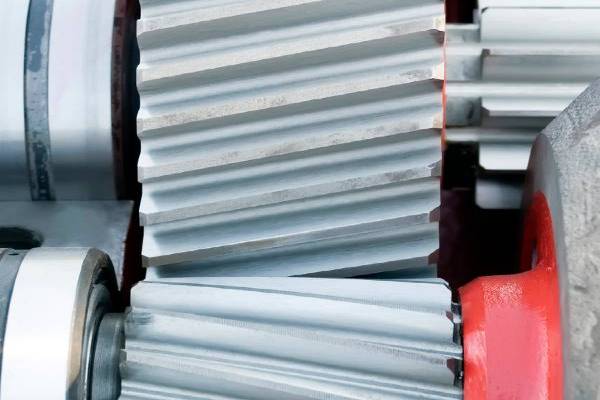Gear blank factor:
Gear blank quality is another factor that can affect the lead variation. Gear mounting surfaces, i.e. bores and faces (for bore gears) or journals (for shaft gears), should be appropriately toleranced as those surfaces have a direct effect on lead quality.
Cutting Conditions factor:
Aggressive cutting conditions can. create excessive forces that may not be adequately absorbed by the fixture, thus negatively affecting lead quality. Also, as hob cutting edges wear, the cutting forces can climb considerably .. In addition, oil contaminated with chips can create an irregular lead roughness.
The hob feed rate also has a direct effect on tooth surface variation in the lead direction-feed scallop depth. Frequently, people who finish hob gears want the scallop depth not to exceed a certain value.
Setup consistency factor:
A tiny chip can contaminate a perfect. fixture resulting in a dramatic lead variation. All mounting surfaces should be checked for proper runout, Consideration should be given to a fixture design that reduces the amount of possible mounting variations between setups.
Gear profile (Involute quality)
Improving gear lead and pitch characteristics is often easier than improving profile characteristics. Gear profile quality can be maintained by keep the above mentioned factors i.e machine factor, work holding fixture,etc under stringent quality checks.
The gear profile quality is affected by a greater number of process variables. The profile quality depends on all contributors listed in the previous section.
However, the inherent hob geometry errors, i.e, lead; pressure angle: the sharpening quality of hob spacing, rake, and flute lead; and hob mounting quality are the additional and very significant contributors to gear profile quality.
Conclusion:
Gear hobbing, as any other process, has certain inherent quality limitations, But, during the last 20 years, those limitations have changed, opening up new opportunities for quality improvements in traditional finish bobbing applications.
In addition, opportunities have been created for the hobbing process to be used as a finishing operations in many more applications where a higher degree of precision is required. As a result, the use of hobbing machines for gear finishing operations has grown in popularity.
This popularity has been reinforced by rehobbing process advancements. rehobbing process is a secondary gear finishing operation that can be done on a hobbing machine. The rehobbing process allows the manufacturer to eliminate heat treatment distortions without having to resort to grinding or another expensive machining process.
Today, finishing gears on a hobbing machine is a viable alternative for a greater variety of gear applications, opening up cost reduction opportunities for gears with quality requirements in the transition area of AGMA quality 9 to 11.

